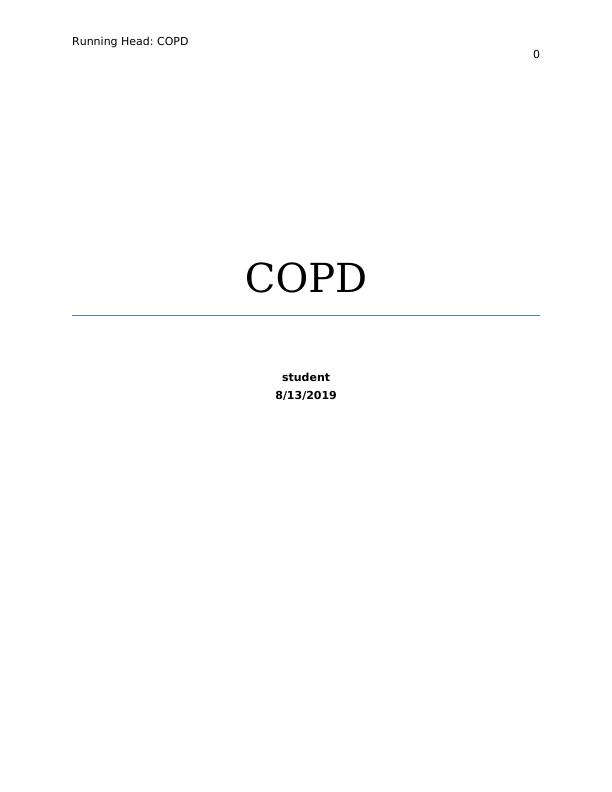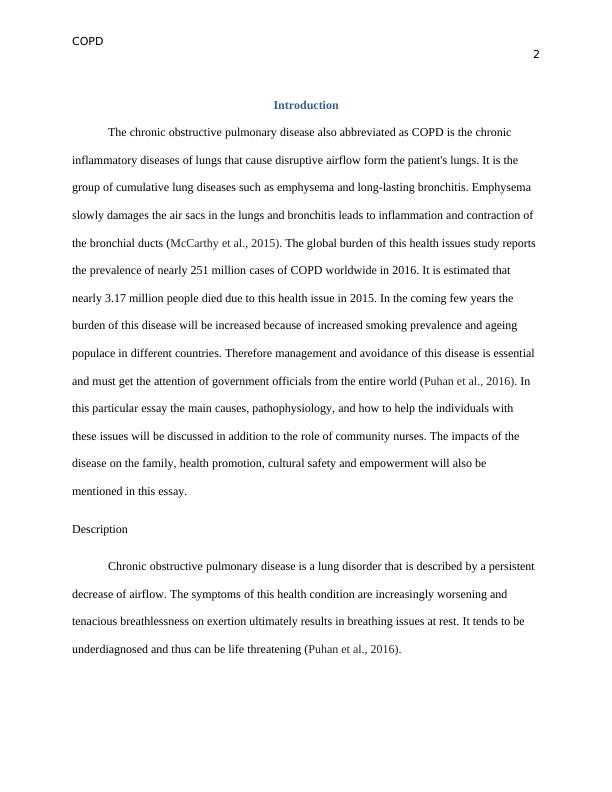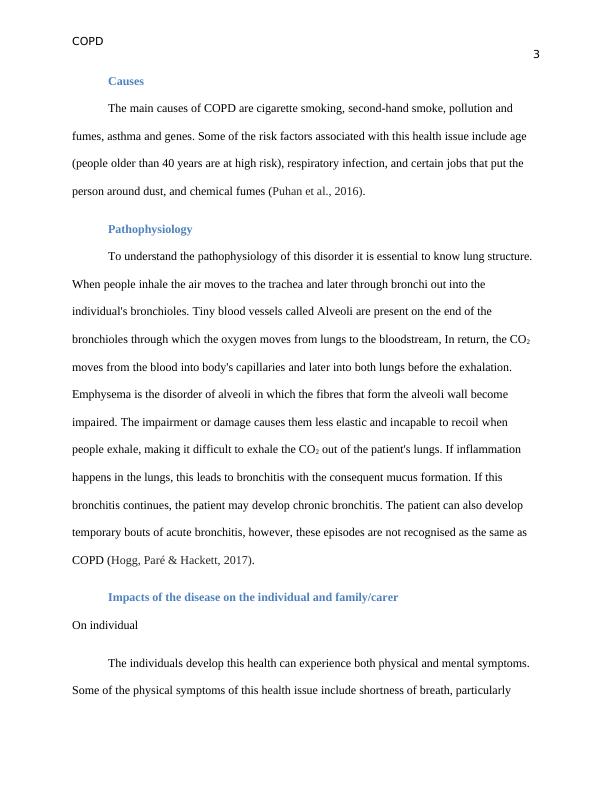Chronic Obstructive Pulmonary Disease
12 Pages2904 Words68 Views
Added on 2022-10-12
About This Document
Running Head: COPD 0 COPD 5 COPD student 8/13/2019 Introduction 2 Causes 3 Pathophysiology 3 Impacts of the disease on the individual and family/carer 3 Heath promotions in COPD 7 Cultural safety and cultural literacy 8 Conclusion 9 Reference 10 Introduction The chronic obstructive pulmonary disease also abbreviated as COPD is the chronic inflammatory diseases of lungs that cause disruptive airflow form the patient's lungs. Impacts on the patient can include the exacerbation of the patient's physical symptoms, which can cause the
Chronic Obstructive Pulmonary Disease
Added on 2022-10-12
ShareRelated Documents
End of preview
Want to access all the pages? Upload your documents or become a member.
Chronic Obstructive Pulmonary Disease Essay
|12
|2476
|154
Understanding Chronic Obstructive Pulmonary Disease (COPD)
|2
|577
|103
(PDF) Pathophysiology of Chronic Obstructive Pulmonary Disease (COPD)
|16
|3650
|128
Pathophysiology of Chronic Obstructive Pulmonary Disease
|14
|3347
|366
Advanced Pathophysiology & Pharmacology: Assignment
|15
|3522
|31
Intervention and Management of COPD
|15
|3611
|188




